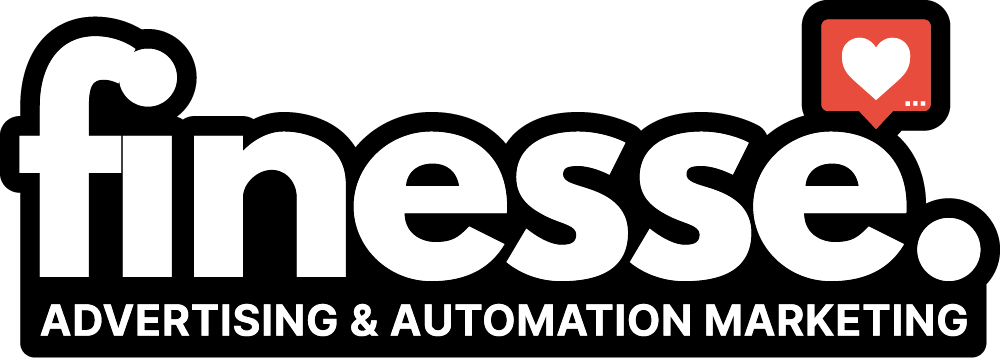Revolutionize Your Business with Finesse Business Suite CRM
Automate, Nurture, and Grow with AI-Powered Conversations

We offer a comprehensive CRM solution that streamlines your business processes, automates customer interactions, and leverages AI to nurture leads.

Finesse Business Suite
Download in the Apple Store & Google Store

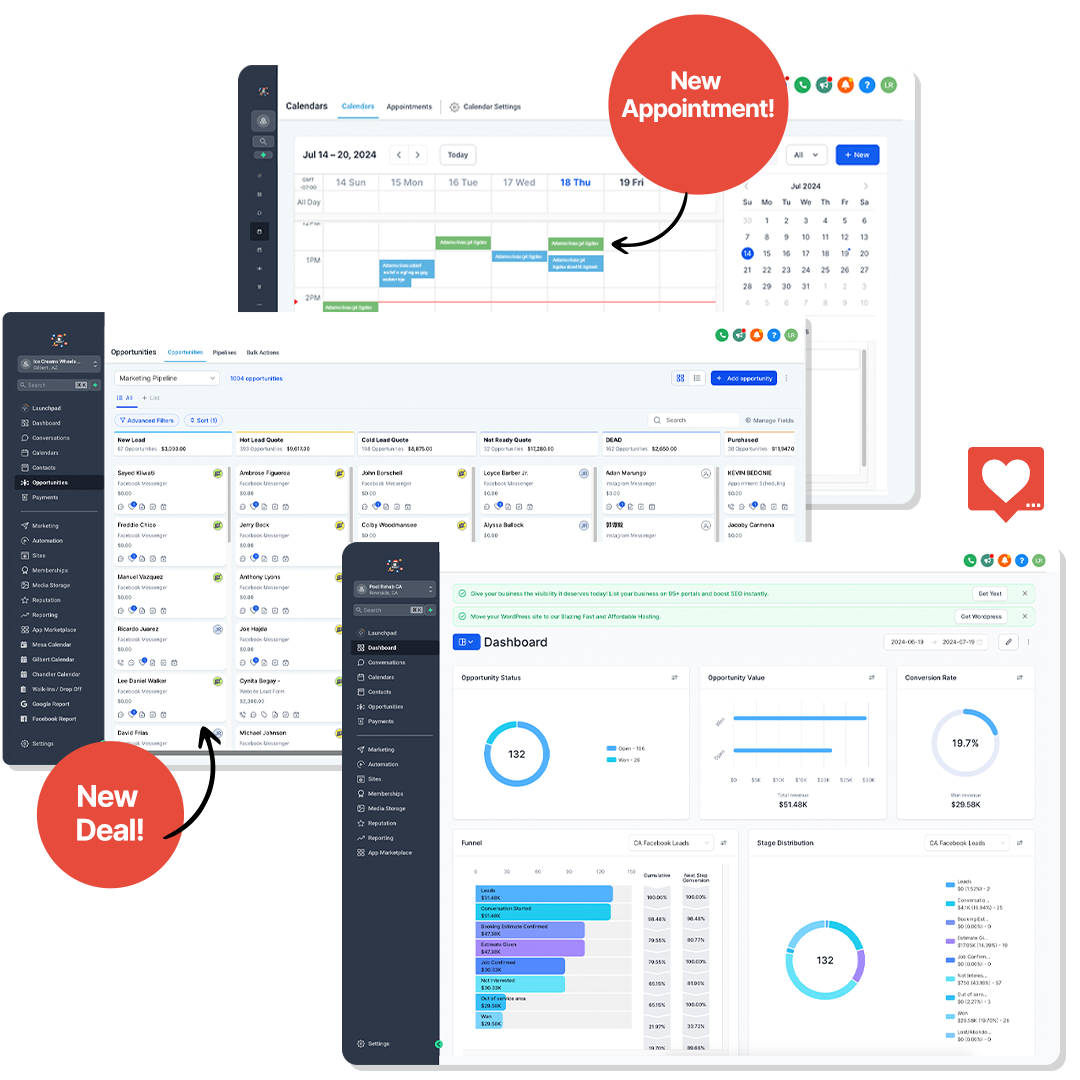
All-in-One CRM for Seamless Management
Centralize Your Customer Data and Interactions

Our CRM consolidates all your customer data and interactions in one place. This ensures seamless management and a 360-degree view of your customers.
Automation to Streamline Your Processes
Automate Repetitive Tasks and Save Time

Automate repetitive tasks like follow-ups and data entry to save time. Focus on what matters most while our CRM handles the rest.

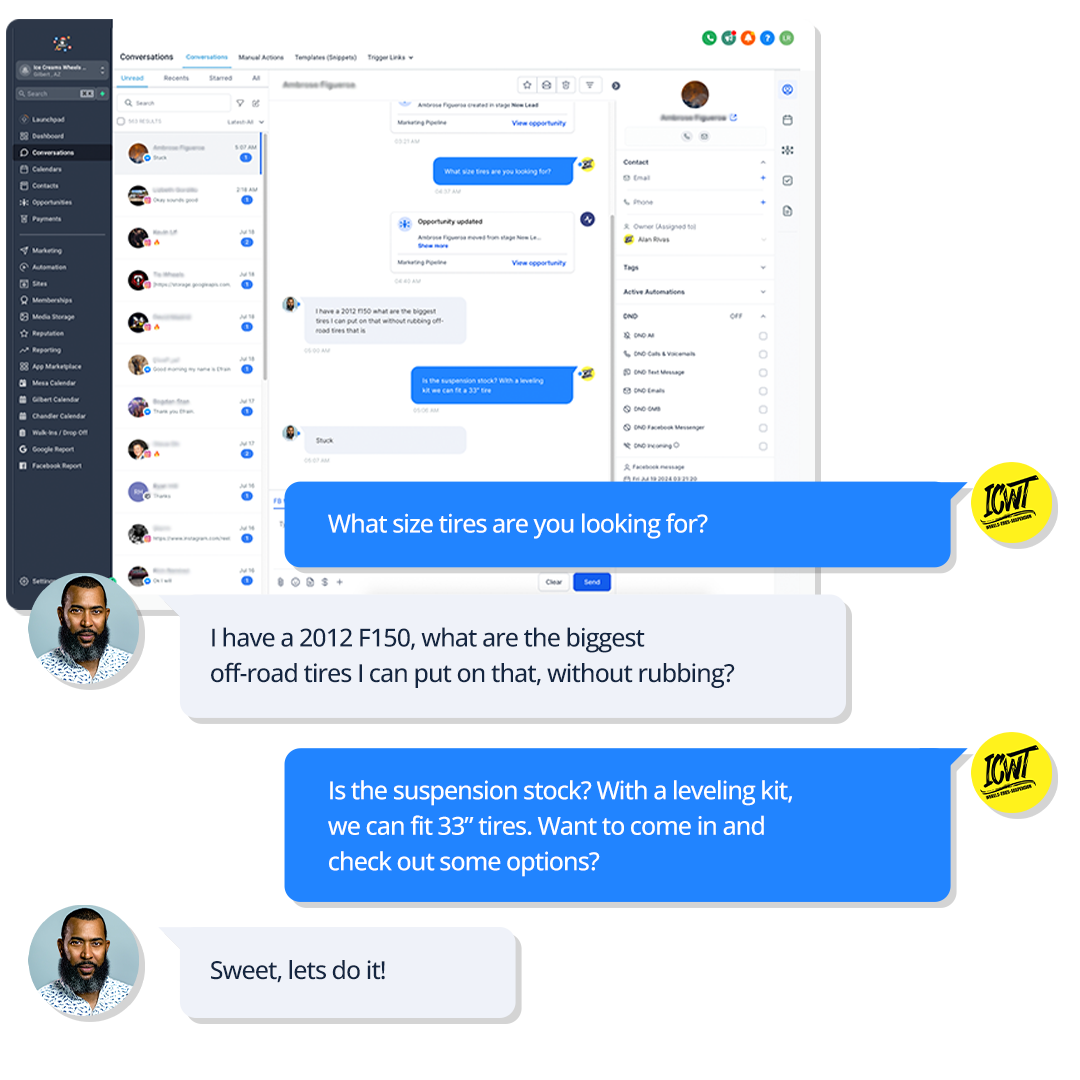
AI-Powered Conversations for Better Engagement
Leverage AI to Nurture Leads and Customers

Our AI-powered conversation tools engage leads and customers with personalized interactions through Facebook & Instagram comments, DMs, Google My Business responses, Email, SMS, website chat, and more. Nurture relationships and drive conversions effortlessly.
Advanced Analytics for Informed Decisions
Gain Insights with Comprehensive Reporting

Leverage our advanced analytics to gain insights into your customer interactions. Make data-driven decisions with our comprehensive reporting tools.

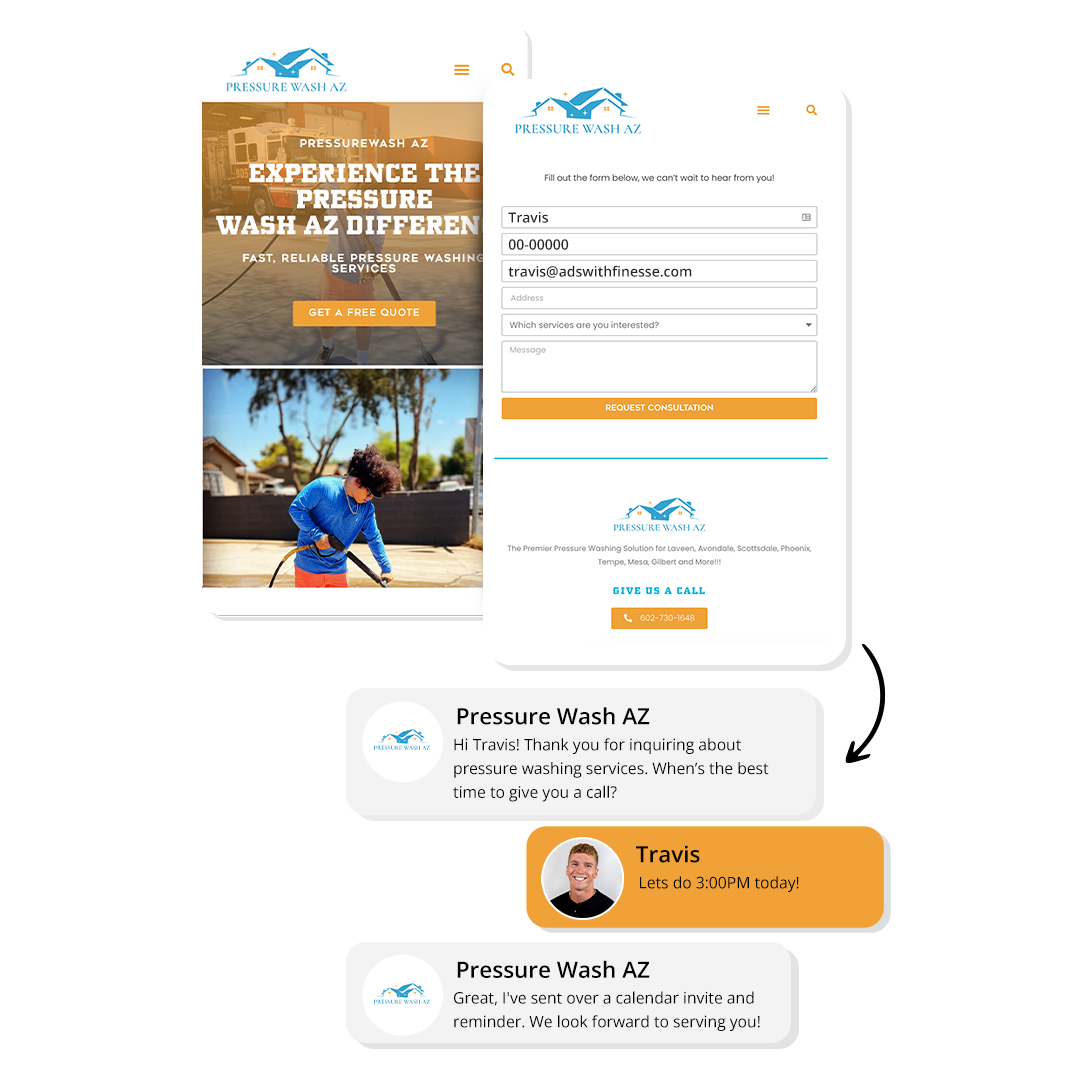
Seamless Integration with Your Tools
Integrate with Your Existing Systems

Our CRM integrates seamlessly with your existing tools and systems. Ensure smooth workflows and enhanced productivity.
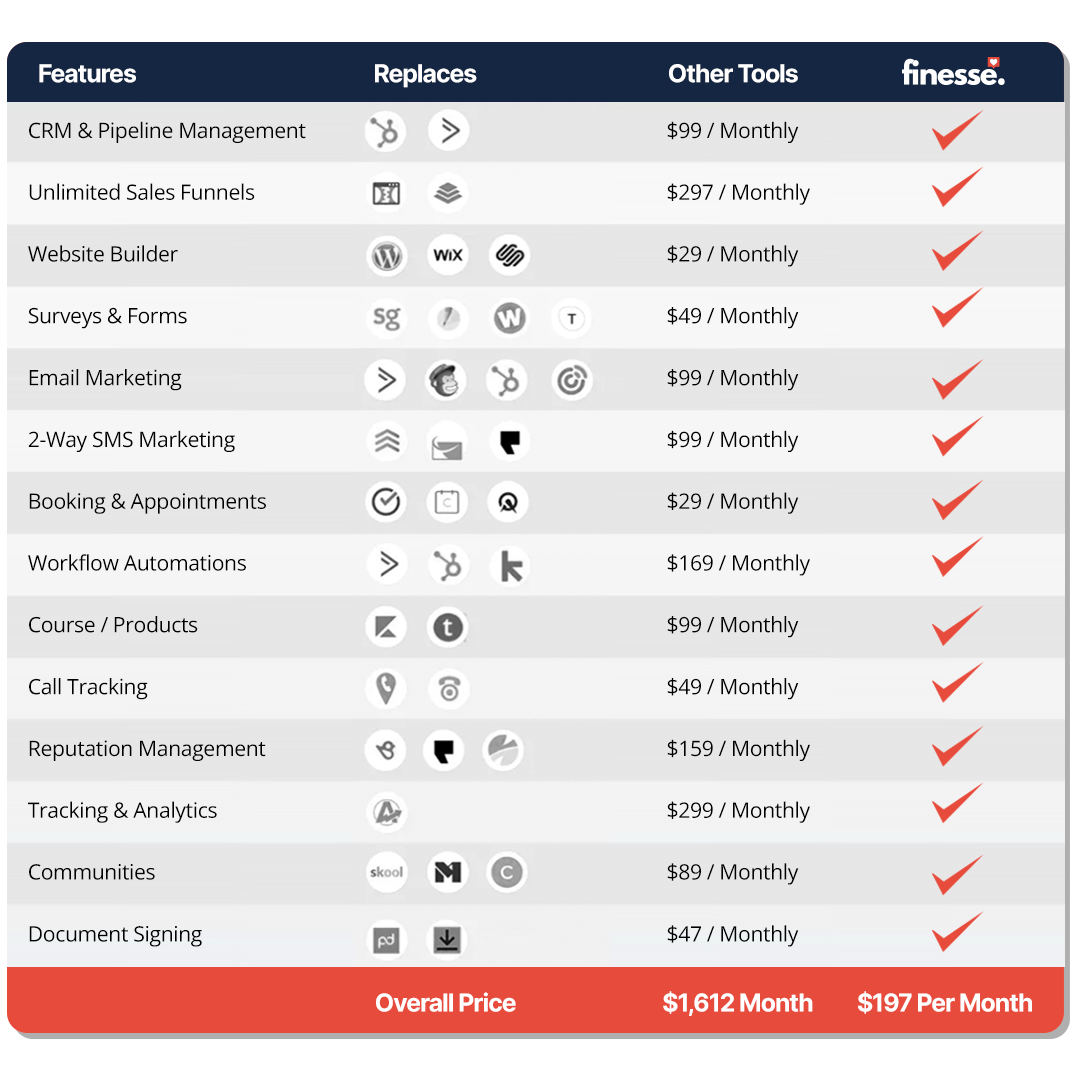
Still got questions?
Frequently Asked Questions
What features does the Finesse Business Suite CRM offer?
The Finesse Business Suite CRM offers features like customer data management, task automation, AI-powered conversations, advanced analytics, and seamless integration with existing tools.
How does the automation feature work?
Our automation feature streamlines repetitive tasks such as follow-ups, data entry, and scheduling. This allows you to focus on more strategic activities while the CRM handles routine tasks.
What is the benefit of AI-powered conversations?
AI-powered conversations engage leads and customers with personalized interactions, nurturing relationships and driving conversions. This ensures better engagement and higher customer satisfaction.
How do the analytics and reporting tools help my business?
Our advanced analytics and reporting tools provide insights into customer interactions and campaign performance. This helps you make informed, data-driven decisions to optimize your CRM strategy. This landing page structure ensures that each section is clear, engaging, and informative, with visuals that complement the text and enhance the overall user experience.

The Power of DM Ads: Engaging Customers in Real-Time
Introduction
In the fast-paced world of digital marketing, engaging with potential customers in real-time has become a game-changer. Direct Message (DM) ads on platforms like Instagram and Facebook offer a unique opportunity to connect with users instantly, fostering meaningful interactions that can lead to higher conversion rates. However, while DM ads are highly engaging, they also come with their own set of challenges. This blog post will explore the effectiveness of DM ads, compare them to traditional website and lead form ads, and highlight the importance of testing different customer journeys to find the best solution for your business.
The Appeal of DM Ads
1. Real-Time Engagement
One of the most significant advantages of DM ads is the ability to engage with customers in real-time. When users click on a DM ad, they are immediately taken to a direct messaging interface where they can interact with your brand. This instant connection allows for personalized conversations, quick responses to queries, and the opportunity to build a rapport with potential customers
2. Higher Engagement Rates
DM ads tend to have higher engagement rates compared to traditional ads. The interactive nature of direct messaging encourages users to participate in conversations, ask questions, and seek more information about your products or services. This level of engagement can lead to higher conversion rates and more satisfied customers
3. Personalized Customer Experience
DM ads allow for a more personalized customer experience. By engaging in one-on-one conversations, you can tailor your responses to the specific needs and preferences of each user. This personalized approach can help build trust and loyalty, making customers more likely to choose your brand over competitors
The Challenges of DM Ads
1. Fat-Fingering and Low-Quality Leads
One of the common issues with DM ads is the potential for "fat-fingering," where users accidentally click on the ad and initiate a conversation without genuine interest. This can lead to a higher volume of low-quality leads, which can be frustrating for businesses trying to filter out serious inquiries from casual clicks
2. Resource-Intensive
Managing DM ads can be resource-intensive. Responding to messages in real-time requires a dedicated team or advanced automation tools to ensure timely and accurate responses. Without proper management, the quality of customer interactions can suffer, leading to missed opportunities and dissatisfied customers
Comparing DM Ads to Website and Lead Form Ads
Website and Lead Form Ads
Higher Quality Leads: Website and lead form ads typically generate higher quality leads. Users who take the time to visit a website or fill out a lead form are often more invested in learning about your products or services, resulting in more qualified leads.
Detailed Information: These ads allow you to collect more detailed information from potential customers, which can be valuable for follow-up marketing efforts and lead nurturing.
Lower Engagement: However, website and lead form ads generally have lower engagement rates compared to DM ads. The process of navigating to a website or filling out a form can be seen as more cumbersome, leading to higher drop-off rates.
DM Ads
Real-Time Interaction: DM ads excel in providing real-time interaction and immediate engagement, which can be highly effective for building relationships and driving conversions
Personalization: The ability to personalize conversations in real-time can enhance the customer experience and increase the likelihood of conversion
Potential for Low-Quality Leads: The ease of initiating a conversation can also attract low-quality leads, requiring additional effort to filter and qualify potential customers
The Importance of Testing Different Customer Journeys
To maximize the effectiveness of your advertising strategy, it's essential to test different customer journeys. By experimenting with various ad formats and engagement methods, you can identify what works best for your target audience and business goals. Here are some steps to consider:
Define Your Objectives: Clearly outline what you want to achieve with your ads, whether it's generating leads, driving sales, or increasing brand awareness.
Segment Your Audience: Use audience segmentation to tailor your ads to different customer groups based on demographics, interests, and behaviors.
Test Multiple Formats: Run A/B tests with different ad formats, including DM ads, website ads, and lead form ads, to compare their performance.
Analyze Results: Use analytics tools to track the performance of each ad format, focusing on metrics such as engagement rates, conversion rates, and lead quality.
Iterate and Optimize: Based on your findings, refine your ad strategy to focus on the formats and customer journeys that deliver the best results.
Conclusion
DM ads on Instagram and Facebook offer a powerful way to engage with customers in real-time, providing a personalized and interactive experience that can drive higher conversion rates. However, they also come with challenges, such as the potential for low-quality leads and the need for dedicated resources to manage interactions. By testing different customer journeys and ad formats, you can find the optimal strategy for your business, ensuring that you maximize the effectiveness of your advertising efforts and achieve your marketing goals.

© 2025 Ads with Finesse | Terms & Conditions | Privacy Policy
Ads With Finesse continually stays up to date with Meta & Google marketing changes related to policies, tools, products and more.
